Looking for the best things to do in Joshua Tree National Park? These are my 17 favorite places to go and see in and around the park.
17 Best Things to Do in Joshua Tree National Park According to a Tour Guide
Famous for its distinct Joshua trees, giant boulders, rugged mountains, mining history, and more, this Southern California national park is a must-do on your travel bucket list. Enjoy a sunrise from the top of a mountain or gaze at the Milky Way under the night sky. Joshua Tree offers impressive sites and activities for your next visit!
Things to Do in Joshua Tree National Park
Joshua Tree National Park is home to about 300 miles of hiking trails, thousands of rock climbing routes, incredible night skies, panoramic viewpoints, historic mines, and plenty of natural beauty to keep you busy for days.
Desert landscapes, plant life, and wildlife all contribute to this park’s unique beauty. With welcoming towns surrounding Joshua Tree and visitor centers chocked full of park information, you’ll enjoy your time here while learning quite a bit about Joshua Tree’s history, culture, and environment in the process.
-
Visit Joshua Tree Town

Joshua Tree Town The adorably small town of Joshua Tree is located just outside of the park’s west entrance. The town is filled with local shops, Airbnbs, restaurants, and cafes. The town actually still looks pretty similar to when it started popping up back in the ’60s, making it a lovely spot for photography.
Joshua Tree Coffee Company, Crossroads Cafe, and Natural Sister’s Cafe are three great options for coffee, light foods, and baked goods. The town of Joshua Tree also has an awesome gear shop called Nomad Ventures, in addition to the National Park visitor center and gift shops.
On Saturday mornings, check out the Joshua Tree Farmers Market from 8 am-1 pm where merchants must follow the strict rules of only selling local produce and art. If that’s not enticing enough for you, explore some of the funky sculptures and art near town.
Simi Dabah Sculpture Museum, the Giant Rock, and the World Famous Crochet Museum are some awesome hot spots in town.
-
Hike to Arch Rock

Arch Rock Arch Rock is one of Joshua Tree’s most impressive rock formations. Arch Rock is a short hike from the White Tank Campground featuring a 30-foot tall granite rock arch. The 0.3 mile Arch Rock loop is a popular destination for night photographers and hikers alike. If the campground is too busy to park in, hikers start at the Arch Rock Trailhead along Pinto Basin Road for a 1.3-mile loop hike.
Along the hike, you’ll have impressive views of Arch Rock from every angle. Since it’s a short, flat trail, you’ll love Arch Rock no matter what your level of hiking experience is—and it’s great especially if you have your partner and kids in tow.
-
Explore the Hidden Valley Nature Trail
Starting at the Hidden Valley Picnic Area near the Hidden Valley Campground, Hidden Valley Nature Trail is another great hiking choice if you want to see a lot in a short amount of time. The trail is a 1-mile loop with 100 feet of elevation gain. Information signs highlight important facts about Joshua Tree National Park.
The Hidden Valley area is one of the most popular areas in Joshua Tree. It offers places for you to camp, hike, climb, and scramble. You don’t have to wander far off-trail to find large boulders for some fun rock scrambling.
When visiting the Hidden Valley Area, keep your eyes peeled for wildlife and plants. This is a popular area to spot desert tortoises, bighorn sheep, and of course, Joshua trees.
The Hidden Valley Nature trail starts at the end of Hidden Valley Road off of Park Boulevard.
-
Visit the Cholla Cactus Garden

Head to the Cholla Cactus Garden to hike the loop trail and experience one of the more unique hikes in Joshua Tree National Park. It sits right at the border where two different environmental zones merge together. The warmer, lower Colorado Desert and cooler, upper Mojave Desert meet here, creating a climate perfect for the high concentration of cholla cacti.
While Cholla Cactus Garden Loop is a flat and sandy hike, if you end up off trail you might find yourself in a dangerous situation.
At first sight, the cholla cacti appear cute, know as “teddy bear cactus” because of their soft, fluffy appearance. But they’re also known as “jumping cactus”. The cacti have thick spines that are important in protecting the cholla cacti from predators. At the end of their spines they have small barbs that sense any movement causing them to “jump out,” hence the name “jumping cactus.”
Even slightly rubbing against one is dangerous—the thick sharp spines can drive into your shoes, clothes, or skin. While you explore the Cholla Cactus Garden make sure you stay on the trail.
The whole Cholla Cactus Garden Loop trail is only a quarter-mile and takes 15-30 minutes to walk. The trail is located off of Pinto Basin Road near the southern part of the park.
-
Go Rock Climbing

Rock Climbing in Joshua Tree Joshua Tree National Park is home to world-famous rock climbing. There are countless boulder problems all throughout the park as well as over 8,000 thousand traditional and sport rock climbing routes.
Located in the high desert, Joshua Tree is the perfect winter rock climbing destination, as well as in the late fall and early spring. Joshua Tree National Park is also a popular spot for highlining—basically, slacklining at extreme heights.
With such a variety of terrain, climbers typically enjoy traditional crack climbing, slab, and steep face climbing. It’s no wonder it’s a world-class climbing destination. If you’re not an experienced climber, however, definitely find yourself a qualified guide.
While a majority of the rock climbing routes are single-pitch, head over to Lost Horse Wall to climb some of the longest rock climbing routes in the park.
While rock climbing in the park, respect the fragile desert environment. Some trails are marked as climbers’ routes and should be used to avoid trampling surrounding ecosystems. Tread lightly and practice Leave No Trace principles to minimize your impact on the environment.
-
Hike Up Ryan Mountain
Ryan Mountain is one of the most popular hikes in Joshua Tree National Park. The trail is 3 miles out and back and gains just over 1000 feet of elevation. From the summit, you’ll enjoy panoramic vistas looking down across the desert floor.
The summit of Ryan Mountain reaches 5,456 feet and offers spectacular views of Mount San Jacinto and the surrounding San Bernardino Mountains.
Because of the elevation gain, the Ryan Mountain trail is rated as moderate/difficult. On average, people spend 2-3 hours hiking this trail. It’s very exposed in some sections and the summit is often windy and cooler than the desert below; so bring your jacket to stay warm!
-
Go Horseback Riding
Horseback riding is a popular, fun way to explore Joshua Tree National Park. There are 253 miles of equestrian trails and areas where you can traverse deep canyons, open desert land, and dry washes throughout Joshua Tree.
It’s important to stay on designated trails created by the national park service because the ecosystems in the desert are very fragile. An organism called cryptobiotic crust is a thin layer of soil that holds the desert sand together. It’s almost impossible to see with the naked eye, but if walked on it takes years to regrow and in time erosion is far more likely.
Therefore, you must follow the designated trails to safely travel by horse throughout the park. If you plan to camp in Joshua Tree there are designated campgrounds that provide areas for stock animals.
-
Explore the Barker Dam Nature Trail
The Barker Dam Nature Trail is one of the best things to do in Joshua Tree National Park. The 1.3-mile short trail is rated easy and only gains 60 feet of elevation.
You’ll enjoy views of Joshua trees in the rocky desert landscape. Go rock scrambling up boulders, go rock climbing, look out for wildlife, or walk the trail along desert washes for incredible views.
This trail is great for those who want to read the information signs and learn about Joshua Tree culture, history, and flora and fauna. At certain times of the year, the Barker Dam fills with water, creating an impressive glassy pool across the dry desert oasis.
The parking area for the Barker Dam fills up quickly so it’s important to arrive early to guarantee a parking spot at the trailhead. Otherwise, you’ll have a long walk down the road from another pull-off.
-
Visit Skull Rock
The Skull Rock Trail is a scenic 1.7-mile nature trail that starts along Park Boulevard. It’s a great stop if you’re on your way into or out of the park, with a parking area accessible near the trailhead.
Skull Rock is one of the most famous rock formations in Joshua Tree National Park. After thousands of years of precipitation, little bits of rain created small depressions into the rock, eroding the granite. Eventually, two “eye-sockets” formed in the rock so it looks very similar to a skull.
The Skull Rock trailhead is just across the entrance from the Jumbo Rocks campground.
-
Go Stargazing

Starry Skies at Arch Rock Planets, stars, soaring meteors, and the milky way are all visible from inside Joshua Tree National Park. Visibility is some of the best in Southern California!
The best time to enjoy the stars is on a clear night during a new moon. Camp at any of the campgrounds to maximize your time spent under these incredible stars. If not, bring chairs and use the roadside pullouts to stop and enjoy the stars overhead.
While light pollution is pretty minimal in the park, head farther into the east of the park to enjoy even clearer visibility. Some light pollution in the town of Joshua Tree is visible in the west of the park. Anywhere off of Pinto Basin Road has some of the best viewing options.
When viewing the stars, use red lights only. White light headlamps, flashlights, and cell phones take longer for your eyes to adjust, so if you must use a light, use a red light headlamp or cover a white light with red tape, fabric, paper, or cellophane.
Also, park temperatures get cool in the evening so make sure you bring extra layers to enjoy the incredible stargazing in the park!
-
Drive Up to Keys View
Wind your way up to Keys View for impressive vistas looking down on the Joshua Tree desert. You can drive up to this viewpoint then walk around and explore park information signs about the area. On a clear day, you’ll enjoy views of the Coachella Valley, the Salton Sea, the San Andres Fault, Mount San Jacinto, and Mount San Gorgonio.
Go at sunrise or sunset for even more spectacular views from this easy-to-access viewpoint.
-
Go Birding
Many birders flock to Joshua Tree National Park to look for southwestern desert birds. Roadrunners, mockingbirds, verdins, cactus wrens, rock wrens, Le Conte’s thrashers, and Gambel’s quails are popular to see year-round.
Some resident birds include red-tailed hawks, Cooper’s hawks, American kestrels, and prairie falcons. There are also many transient birds that pass through the park throughout the winter as they migrate to warmer areas.
Barker Dam, the Oasis of Mara, and Cottonwood Spring are some of the best spots to go bird watching.
-
Visit the Cottonwood Spring Oasis
The Cottonwood Spring Oasis is a 1.5-mile loop trail that offers gorgeous views of wildflowers, Joshua trees, and fan palms. The trail is rated easy and is great for hikers of any skill level.
Cottonwood Spring Oasis is one of the most overlooked but most beautiful parts of Joshua Tree National Park. Cottonwood Spring formed after a major earthquake long ago. Then in the 1920s, the Cottonwood Spring Oasis began growing from seeds dropped from birds and coyotes. The native fan palms here are a sight to behold—their trunks are much, much thicker than the palm trees you’re probably used to seeing.
The Cottonwood Spring Oasis Trail is close to the Cottonwood Visitor Center located near the south entrance of Joshua Tree National Park. The trail loop starts and ends at Cottonwood Spring Campground.
-
Explore Lost Horse Mine
If you’re a history lover, check out Lost Horse Mine to learn about California’s gold rush history. As mining was dying out in California’s mountains, many miners moved to the desert hoping to find success.
Many were reluctant because of the hot desert climate but Lost Horse Mine struck gold. According to the National Park Service, over 10,000 ounces of gold and 16,000 ounces of silver were mined from the late 1890s to early 1930s, in Joshua Tree National Park.
The trail takes hikers through the famous Lost Horse Mine, and while you probably won’t find gold today, this moderate trail is known for its springtime wildflowers, abundant Joshua trees, and information signs about the significance of this part of the park.
The trail is rated moderate if you only follow it for a mile. The total trail is a 6.5-mile loop with a total elevation gain of 550 feet and rated as difficult.
-
Chat with a Ranger at a Visitor Center
Visit a Joshua Tree National Park visitor center to learn more about the park’s history, geology, wildlife, plant life, and more. The rangers at the visitor centers have a plethora of information to share. They also have schedules up for daily ranger-run activities which include everything from stargazing to wildlife talks to geology walks.
The Oasis Visitor Center is located near the northern entrance to the park. Featuring the beautiful Oasis of Mara near the town of Twentynine Palms, the Oasis Visitor Center is the most historically significant visitor center in Joshua Tree. The Oasis Visitor Center was established in the mid-1900s when Joshua Tree was only a national monument.
The Cottonwood Visitor Center sits at the south entrance of the park and is a good first stop when you’re entering from the south. The Cottonwood Visitor Center is filled with information about Joshua Tree’s hiking trails, flora and fauna, and other park information, so brush up on your knowledge before you start exploring.
-
Explore Keys Ranch
Keys Ranch is an old western preserved ranch portraying a pioneer family’s life. Learn the story of William F. Keys and his family and what it took to work and prosper in the rugged Mojave Desert.
Ranger-guided tours of Keys Ranch will tell you the 60-year story of their lives and how the couple raised 5 children in the remote desert. Keys ranch is considered a National Historic Registered Site and is in a remote rock canyon in Joshua Tree. Therefore, visiting is restricted to ranger-led tours.
The tours are a half-mile and last 90 minutes. You can stop by a visitor center for more information and to arrange a tour.
-
Take a Sound Bath

Joshua Tree National Park If you’re feeling stressed out, join a public sound bath in the town of Joshua Tree at Integratron. It’s an unforgettable experience where you can bliss out in relaxation and rejuvenation after listening to healing sounds for an hour.
Participants will enjoy a meditative experience as they are “bathed” in a variety of sound waves. Baths are known to soothe the nervous system, manage anxiety, and connect with your body.
Tips for Visiting Joshua Tree National Park
The park is open year-round 24 hours a day. The high season is from October to May, when temperatures are the most moderate. A 7-day vehicle entrance permit costs $30. Individuals can enter on foot or bike for $15 for the week. An annual pass is $55 or an America the Beautiful Pass that allows access to all US National Parks is $80 for the year.
Check out the Joshua Tree park website for the most up-to-date information, closures, and restrictions throughout the park.
Getting to Joshua Tree National Park
Located in the high desert of Southern California, Joshua Tree National Park is pretty remote; however, there are a few major cities within a few hour’s drive.
Palm Springs is about an hour from Joshua Tree National Park and is the home to the nearest airport. You might prefer staying in Palm Springs and taking day trips into the park. From Palm Springs it’s possible to join tours from the city into Joshua Tree.
Los Angeles is the second closest large city and is about 2 hours away without traffic. San Diego and Las Vegas are both about 3 hours from the Joshua Tree.
Driving your own car, or if you fly, renting a car or campervan is the best way to explore the park. While there are some commercially operated tours from larger cities, a personal trip is a preferred way to maximize what you can see.
Getting Around Joshua Tree National Park
When visiting the park, there are three park entrances. The north entrance is closest to the town of Twentynine Palms and connects to the town of Joshua Tree through the western entrance when following along Park Boulevard.
The south entrance of the park is the most remote and is located between two small unincorporated communities, Chiriaco Summit and Cactus City off of Highway 10.
Park Boulevard runs from the west entrance of Joshua Tree to the north entrance of Joshua Tree to the town of Twentynine Palms. This road offers access to many of the most popular trails and viewpoints in the park.
If you’re visiting the park and have a high clearance vehicle you might have a fun time hitting the dirt roads for some adventure and solitude. The Queen Valley Road to Desert Queen Mine is a great spot to explore.
If you’re visiting the park during the high season or entering on a weekend morning, arrive at the park early. The park’s west entrance is easily the busiest. If arriving during peak visiting times it’s better to drive a bit farther and enter through the north entrance to save time.
What to Pack for Joshua Tree National Park
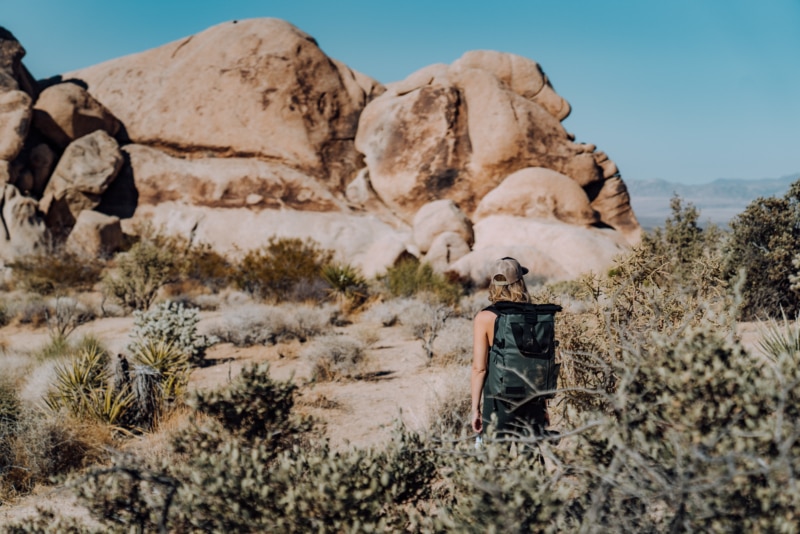
The time of year when you visit Joshua Tree will determine what you need to pack, but there are some essentials you should carry at any time of year. There is no cell reception and services are minimal in Joshua Tree National Park.
- Water: Carry at least a gallon per person per day and bring additional water if you’re camping.
- Food: Bring plenty of food for your day hike as well as high-calorie snacks like dried fruit, bars, and nuts. There is nowhere to purchase food in Joshua Tree so you must stock up on food outside of the park.
- Hiking Shoes: Sturdy, broken-in footwear is essential. Some hikers prefer hiking boots with ankle support while others prefer trail runners. Comfortable shoes with good traction should work well.
- Hiking Daypack: A daypack between 20-25 liters is a great option for hiking. Osprey sells some great packs. For men, check out the Talon 22, and women should check out the Tempest 20.
- First Aid Kit: Check out the first aid kids made by MyMedic. They sell supplies in varying kit sizes depending on the intensity and length of your trip.
- Hat: In the winter bring a warm hat; in the summer bring a baseball cap.
- Sunscreen: The desert sun is strong, even in the winter and on cloudy days. Sunblock is absolutely essential.
- Sunglasses: It’s always important to protect your eyes and with the bright, white granite everywhere Joshua Tree, sunglasses are a must.
- Clothing Layers: The time of year you visit will determine what clothing is appropriate, but layers are the best option with varying climates. Day and night temperatures vary drastically, especially during different seasons. Check out this guide on what to wear hiking.
- Sun Hoodies: A sun hoodie is a great option in the warm/hotter months. They’re quick-drying, synthetic materials, long-sleeved, and offer UPF sun protection. Most sun shirts have hoods to protect your neck and ears from the sun.
- Merino Wool Long Sleeve: During the cooler months, this is another quick-drying material and a great base layer option.
- Hiking Pants: Hiking pants provide protection from the sun, vegetation, and sharp rocks. Quick-drying pants are a great option for hiking.
- Puffy Coat: If you’re visiting in the late fall to early spring, Joshua Tree gets cold in the morning and evenings so a synthetic or down coat is a great layer to have.
- Rain Jacket: Monsoon season in the summer and winter weather brings the most precipitation. Also, a rain jacket doubles as a great wind layer.
- Topographic Map: Downloading a topo map before visiting Joshua Tree will make your visit much easier. Check out AllTrails to view most of the trail routes. The app does a great job guiding hikers back to the trail if they end up wandering in the wrong direction.
- Headlamp: A headlamp is always important to carry. Your hike may take longer than expected, or if you plan a sunrise or sunset hike, a light source in the dark is valuable.
Where to Stay in Joshua Tree National Park
There are tons of places to stay in Joshua Tree National Park. Whether you’re looking to camp in the Park or stay in an amazing desert hotel near Joshua Tree, you’ll find plenty of options ranging from cute inns to upscale stays.
In the park, camping is the only option. Outside the park, there are plenty of vacation rentals, hotels, inns, and glamping options.
Where to Stay Inside the Park
In Joshua Tree National Park there are plenty of comfortable campgrounds offering incredible views, and many of them are the start of trailheads.
There are over 500 campsites in Joshua Tree and most are available through online reservations 6 months ahead of time. For Joshua Tree camping reservations visit Recreation.gov.
Reservations are recommended during the high season from October to May, on weekends, and on holidays. The reservations are open year-round but some sites close in the summer.
There are a few campgrounds in the park that allow first-come, first-serve walk-in visitors but they fill up quickly on weekends so arrive early! Also, most campgrounds in the park have few amenities so plan to pack in all water and food you need and pack out all waste.
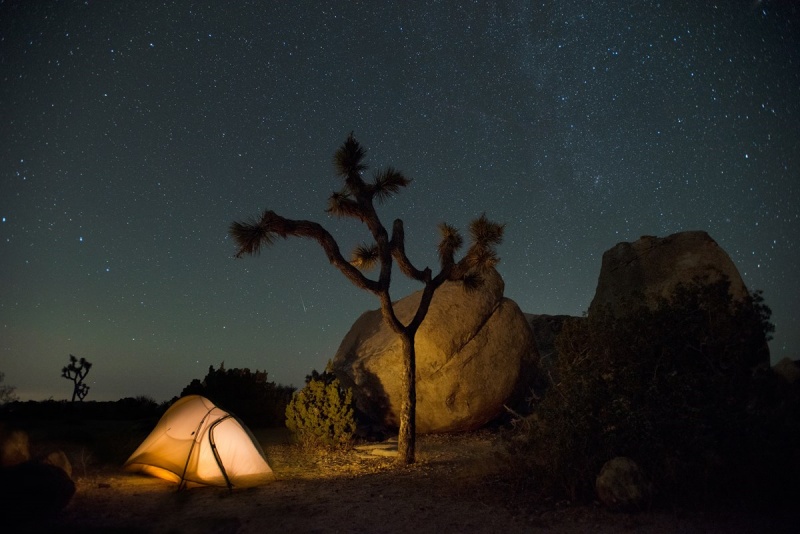
Black Rock Campground
Black Rock Campground sits in the northwest corner of Joshua Tree. It has 99 sites reservable online for $25 a night. Each site has a fire ring and picnic table. The campground has drinking water, flushing toilets, and a dump station. Both RV’s and tents can stay here.
Hidden Valley Campground
This campground is first-come, first-served. It has 44 sites for $15 a night, and campers pay at the entrance station with cash or check. There are pit toilets but no water. These walk-in sites fill up quickly during holidays, weekends, and in the spring. It’s best to arrive by early Friday morning to secure a spot.
White Tank Campground
White Tank Campground is also first-come, first-served. There are 15 sites available for $15 a night. It has pit toilets, fire grates, and tables but no water. White Tank Campground is located in the darkest part of Joshua Tree and is one of the best campgrounds to enjoy views of the night sky.
Where to Stay Outside the Park
If you prefer a comfy bed in a trendy town there are plenty of accommodation options outside of Joshua Tree National Park. Whether you book a classic hotel, a quaint vacation rental with a hot tub, or a glamping tent, there are plenty of options to suit your needs.
Both the town of Joshua Tree and the town of Twentynine Palms have great accommodation options.
-

Joshua Tree Inn. Photo: Tripadvisor The Joshua Tree Inn was built in 1949 and is a stylish, Spanish Colonial Inn, only 5 miles from the park’s west entrance. This cute, rustic lodge is a favorite among many visitors to Joshua Tree National Park. The inn has rooms and suites of varying sizes for any occasion as well as a courtyard, fire pits, a swimming pool, picnic tables, and shade structures.
-

Sunnyvale Garden Suites Hotel. Photo: Priceline The Sunnyvale Garden Suites are located in the town of Twentynine Palms, near the north entrance into Joshua Tree National Park. This place is a great option for those looking for condo-style living. Most suites have full kitchens and a variety of bed options.
-

Sacred Sands. Photo: Booking.com Sacred Sands is a straw bale home turned into an upscale bed and breakfast. It’s just over a mile from the west entrance of Joshua Tree and is very close to the town’s restaurants and shops. This home is a popular accommodation for weddings and special events as well.
-

The Castle House Estate. Photo: Booking.com The Castle House Estate sits back off of Twentynine Palms Highway, close to park entrances. The trendy, modern estate sits on 12 acres of land with the mountains in the distance and offers an incredible Joshua Tree glamping experience. Stay in a yurt, guard tower, or at a campsite.
-

Pioneertown Motel. Photo: Booking.com The Pioneertown Motel motel has a wild west theme out in the Southern California desert. It’s located just outside the west entrance of the park and has a lovely lounge, desert garden, beautiful rooms, cabin options, and plenty of event space.
-

Joshua Tree Ranch House. Photo: Booking.com The Joshua Tree Ranch House is located in Yucca Valley a bit northwest of the park. While this town is a bit farther out, it’s closely located to larger grocery stores. This motel is a quiet place to stay when visiting Joshua Tree. The rooms have basic amenities with a shared pool and fire pit area.
-

Desert Hot Springs Spa Hotel. Photo: Booking.com If you’re looking for a 1960’s hotel with modern amenities, pools, and a hot spring, the Desert Hot Springs Spa Hotel is the perfect spot. It’s located about 45 minutes from the western entrance into Joshua Tree and is the perfect place to relax your muscles after a long day of hiking or climbing.
The mineral spa pools are open 24 hours a day and are the perfect way to have a luxurious stay in Joshua Tree.
Final Thoughts on Visiting Joshua Tree National Parks
With hundreds of miles of hiking trails, unique rock formations, incredible desert flora and fauna, historic mines, and more, it’s no wonder Joshua Tree is one of the most famous desert national parks. Camp under the stars, go birding, hang out in town, relax in a hot spring, or enjoy a sound bath. With so many amazing things to do in Joshua Tree, you’ll have no trouble finding a way to enjoy your time here.
Make sure you’re mindful of this fragile desert environment. Follow the Leave No Trace Principles to minimize your impact on the environment to protect Joshua Tree’s native inhabitants, and so that future visitors can enjoy this place for years to come.
-
How many days is enough for Joshua Tree?
3 days is a good amount of time to fully enjoy Joshua Tree National Park.
-
What is the best time of year to visit Joshua Tree?
Spring and Fall are the best times to visit Joshua Tree National Park.
-
What major city is closest to Joshua Tree National Park?
Joshua Tree is closest to San Bernardino and Los Angeles.
-
Do you need a reservation to visit Joshua Tree National Park?
No, you don’t need a reservation to visit Joshua Tree. However, you may need a campsite reservation if you want to camp in the park.
-
How much money does it cost to go to Joshua Tree National Park?
The entrance fee to Joshua Tree National Park is $30.
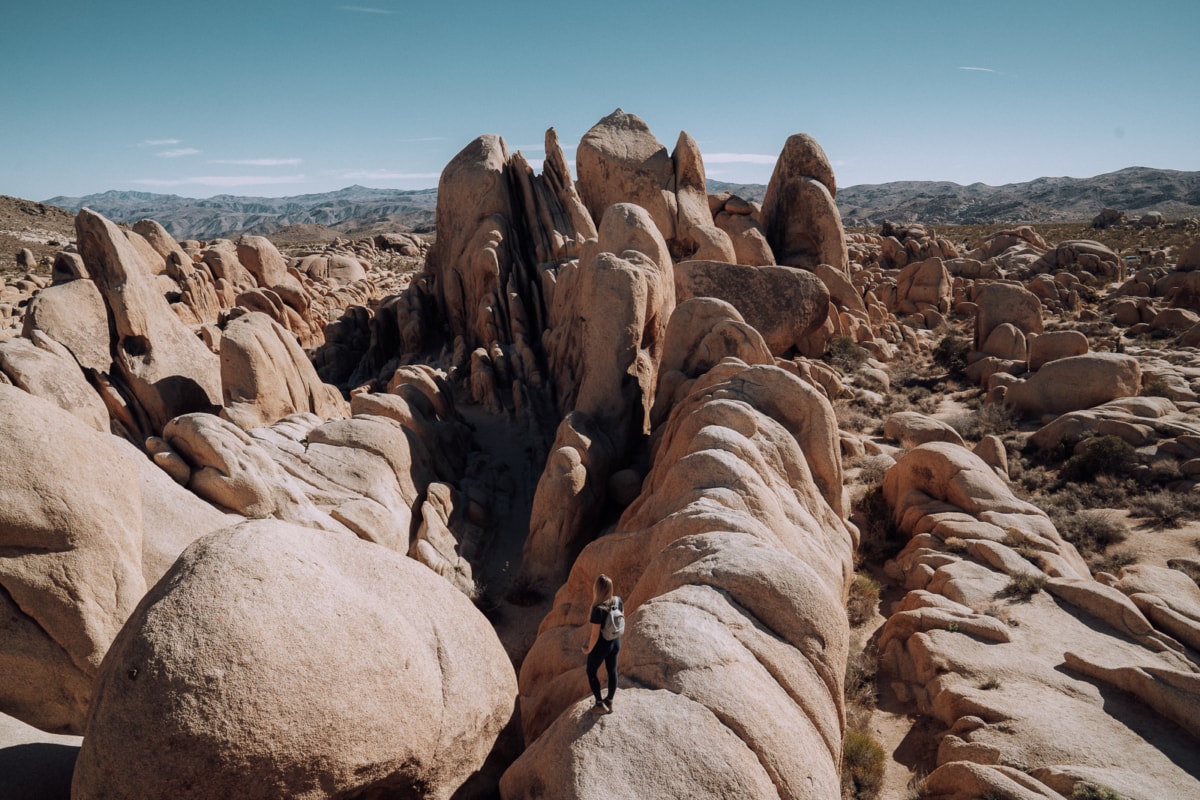
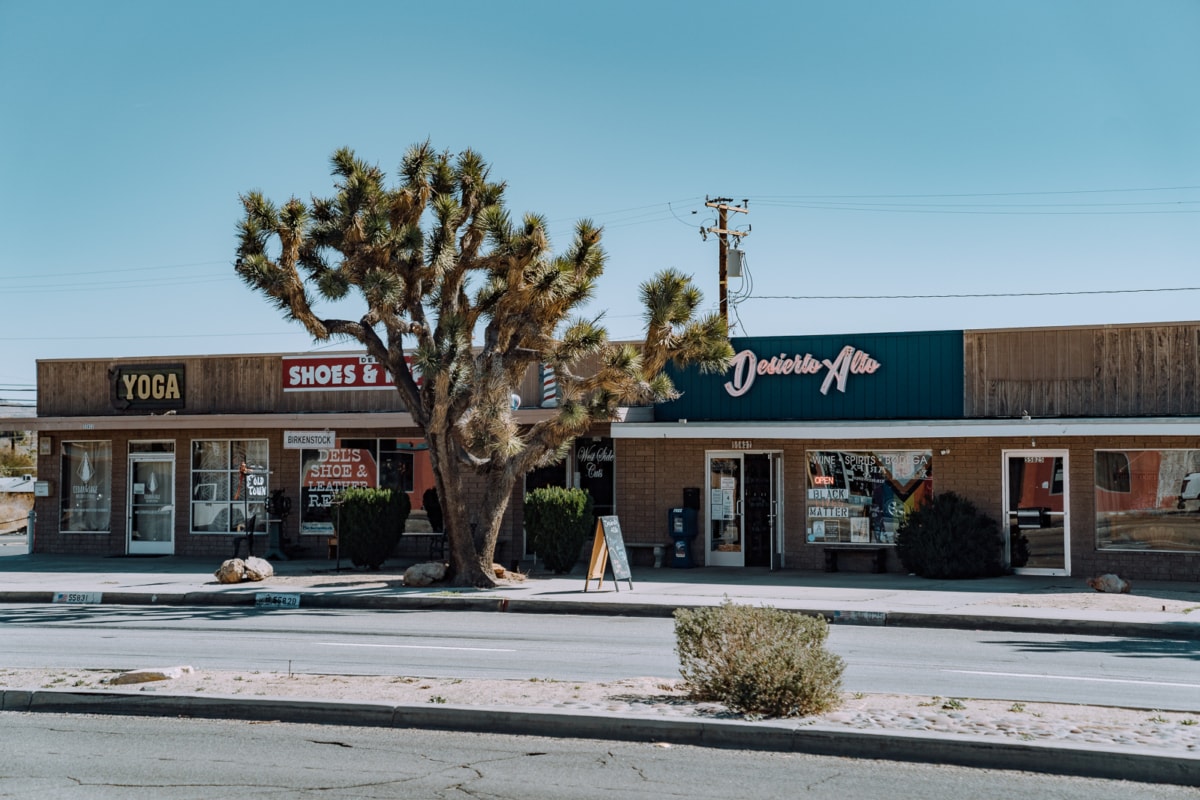
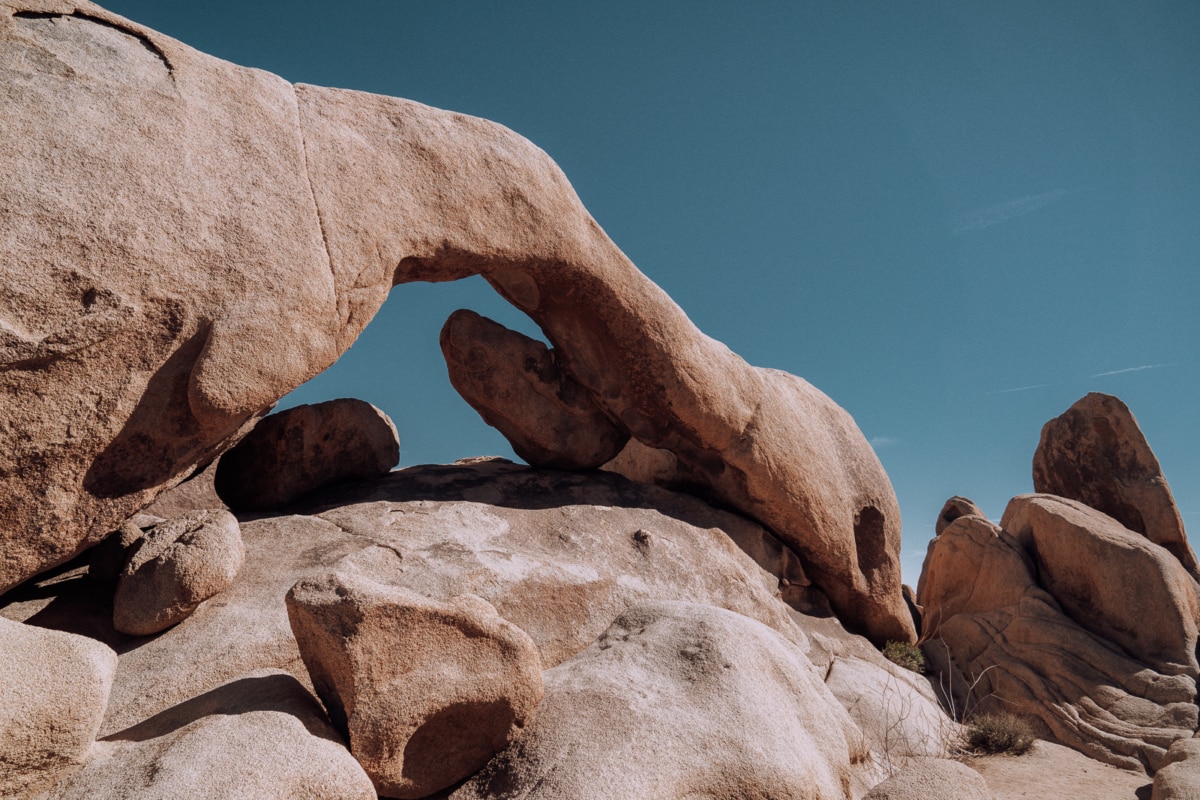
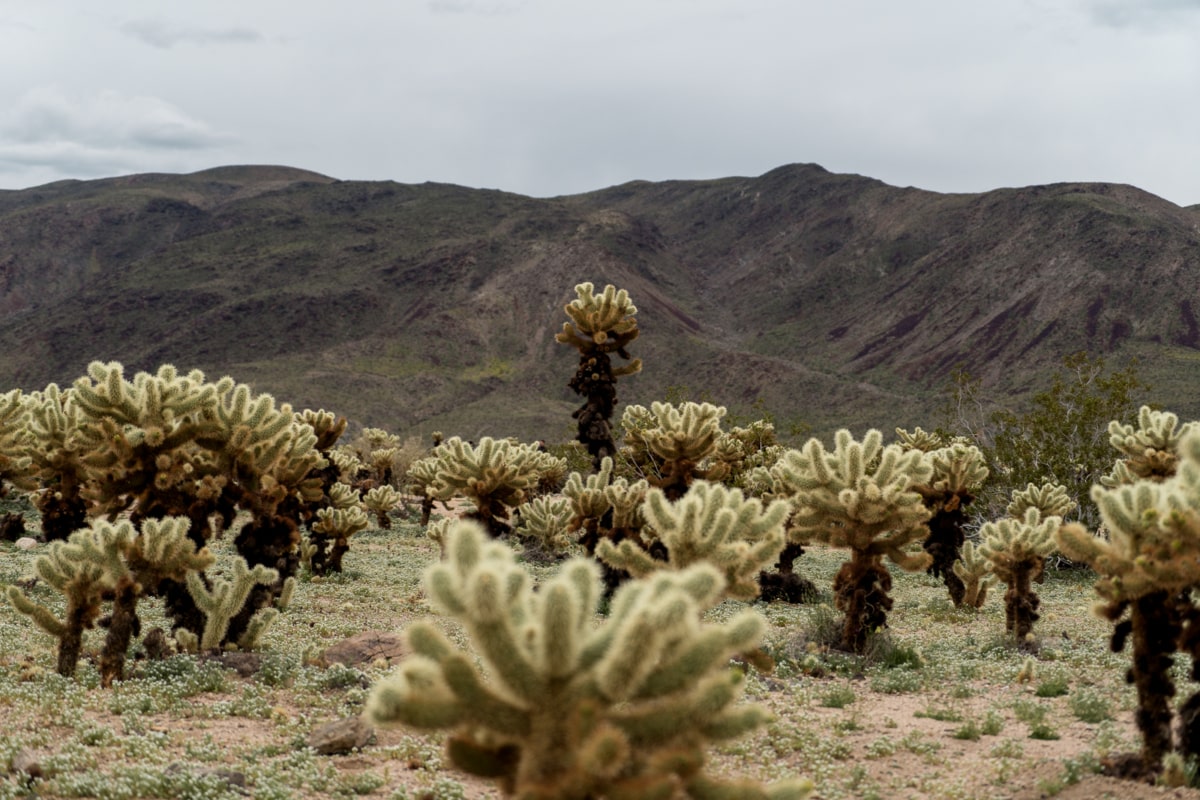
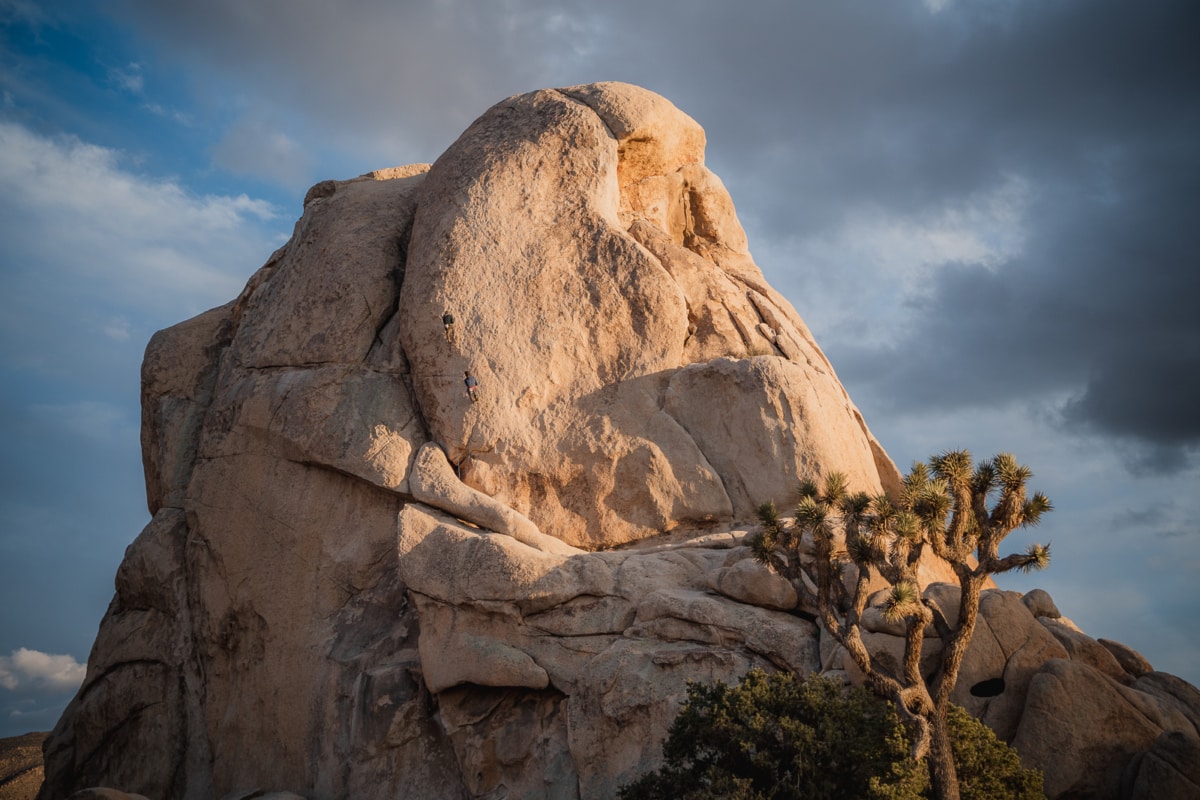
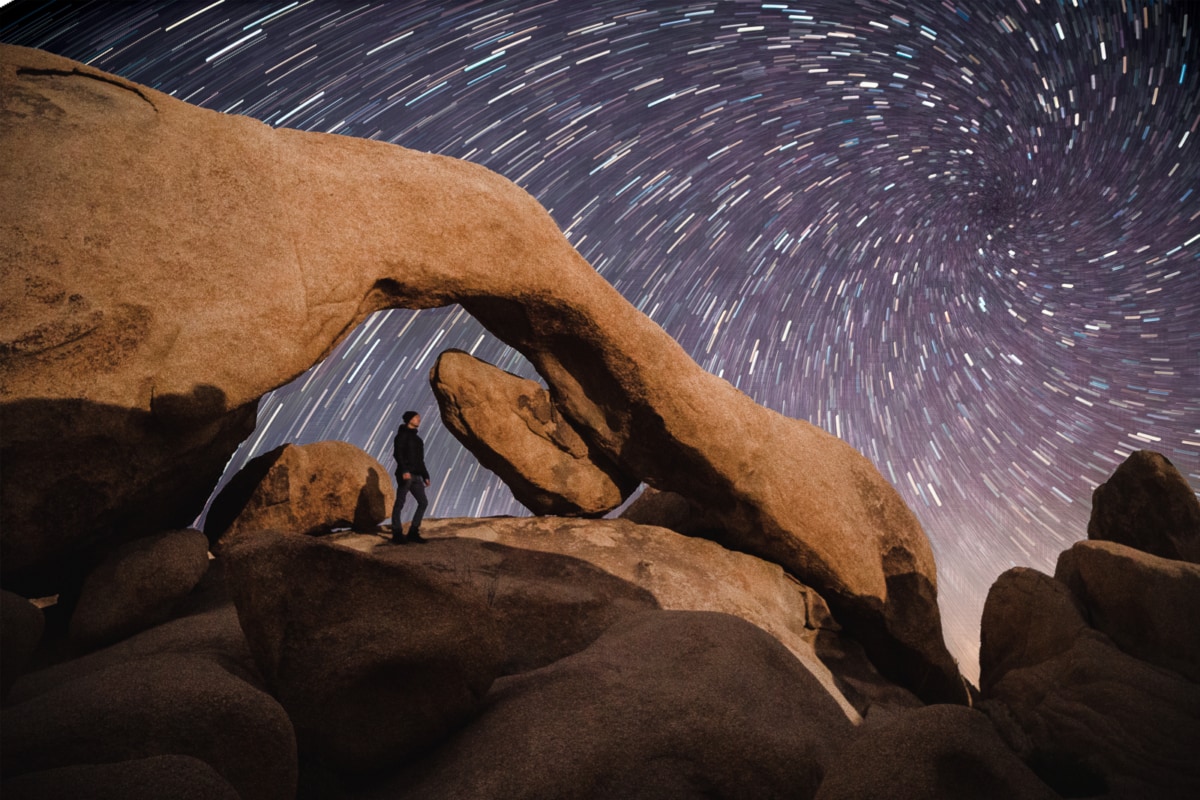
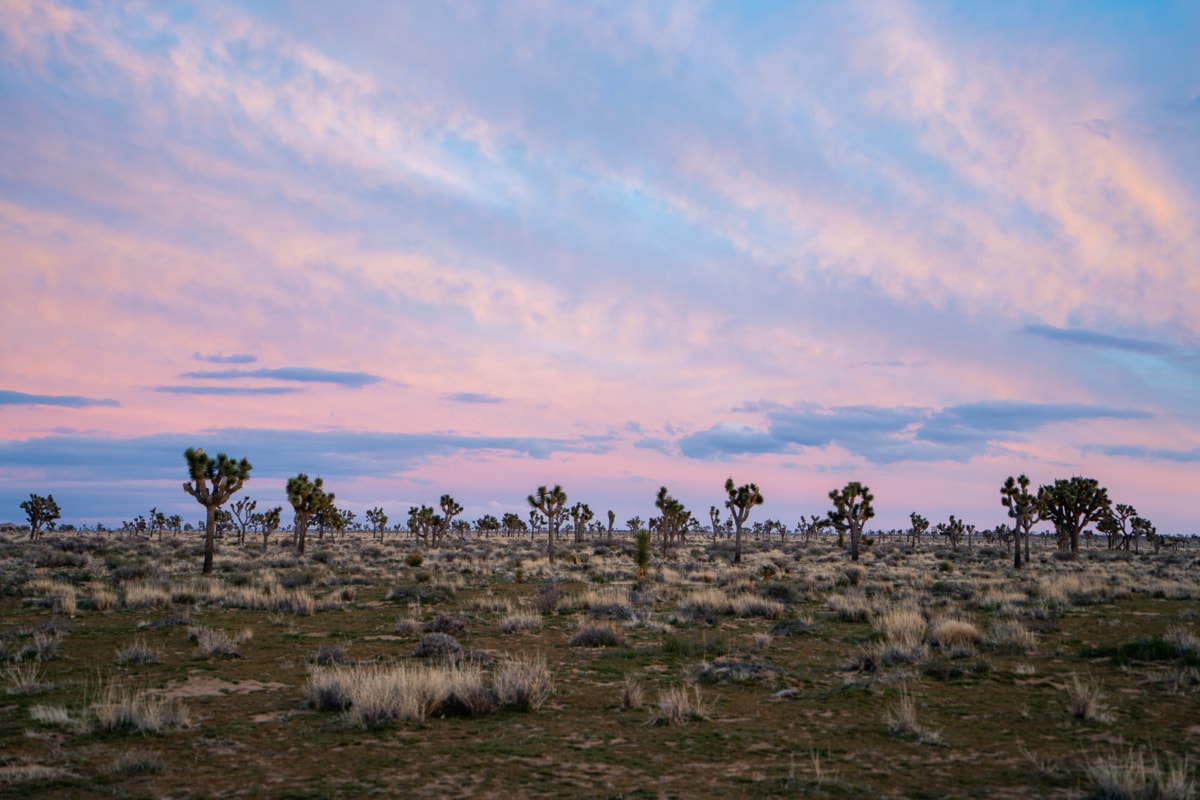
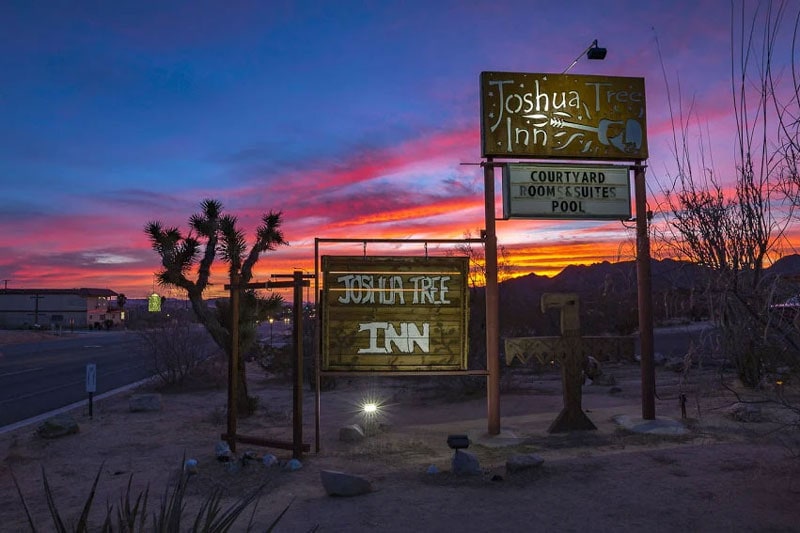
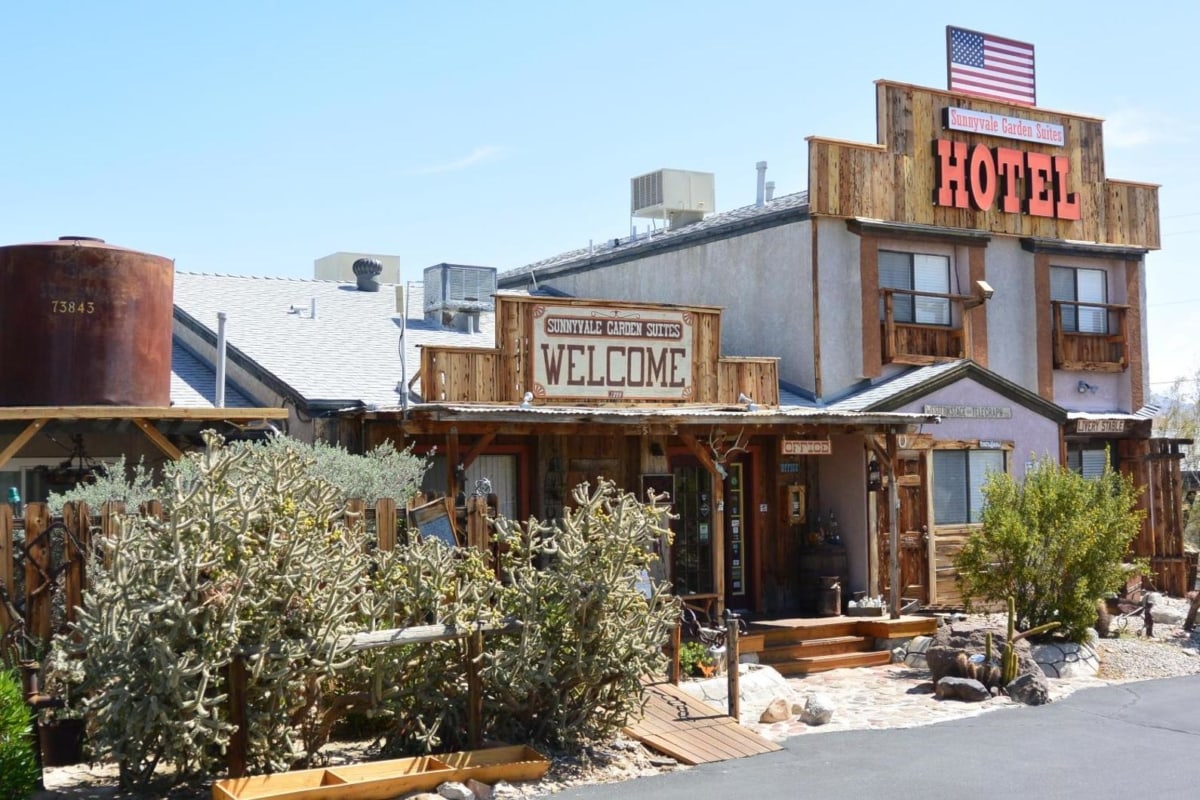
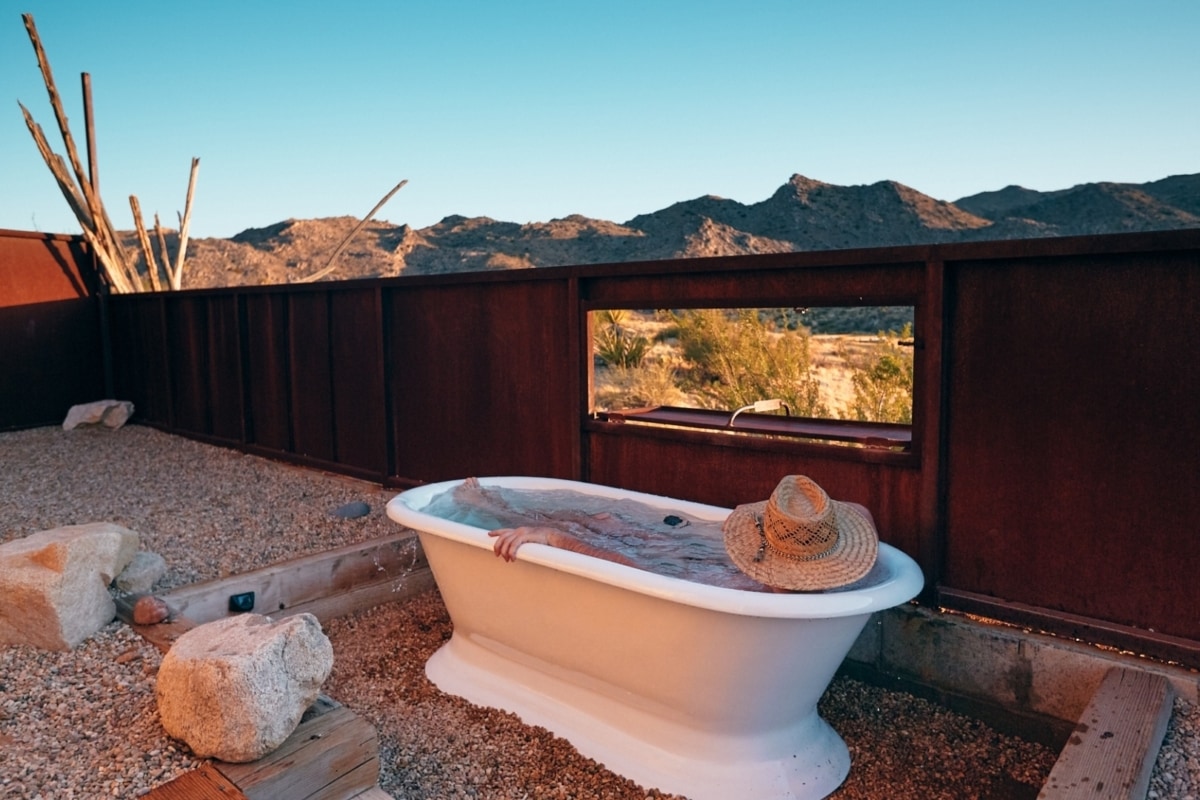
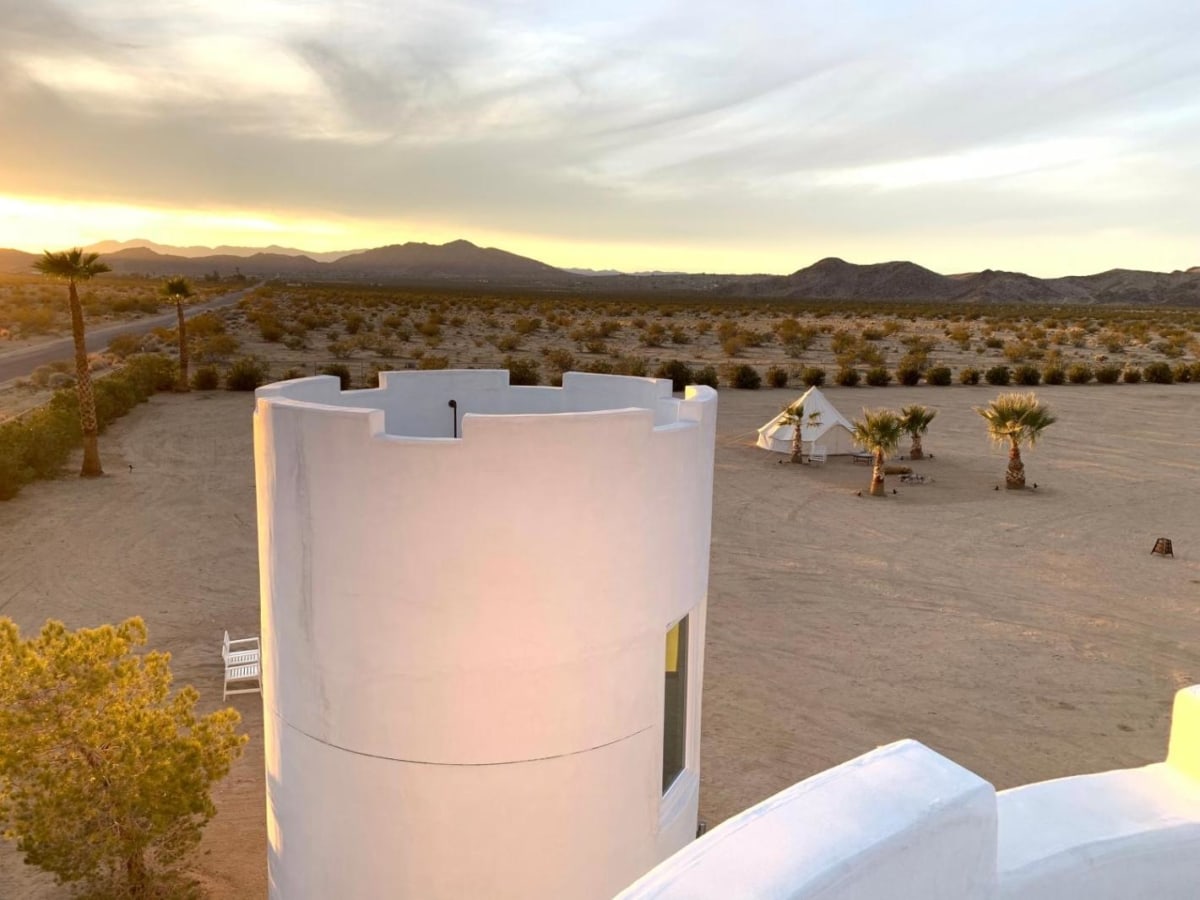
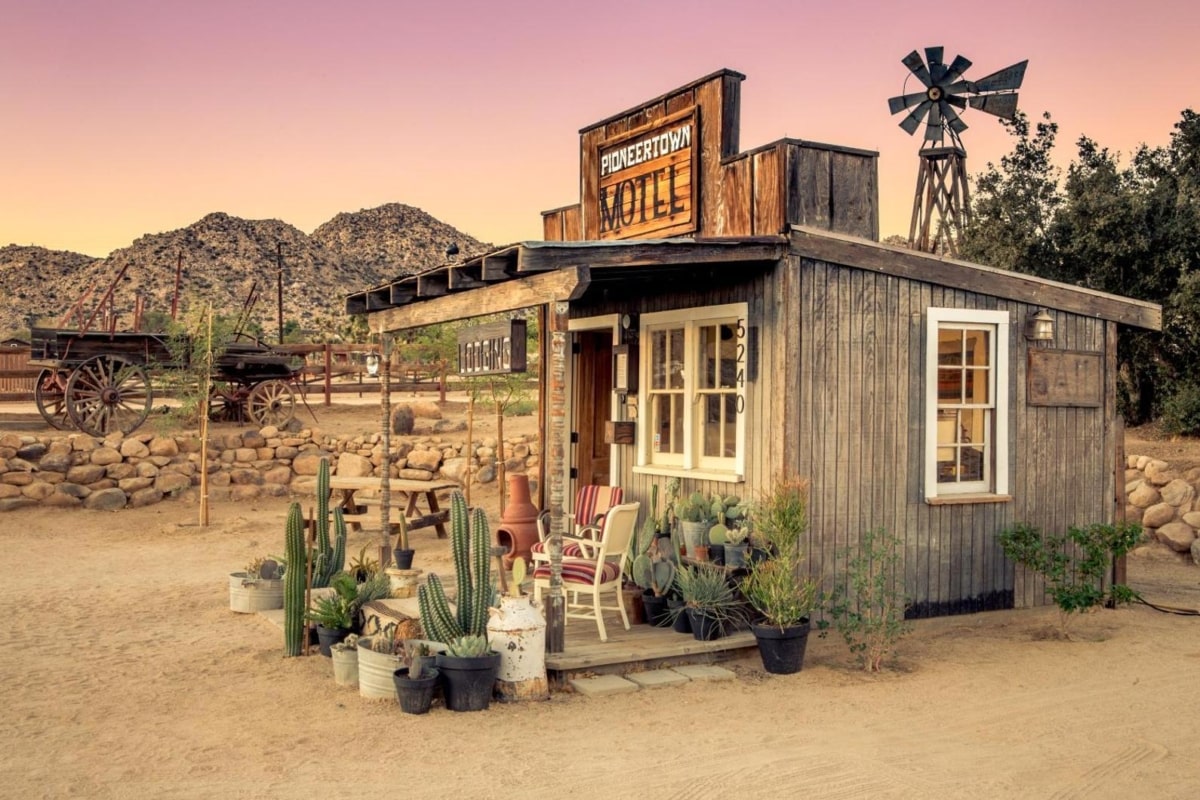
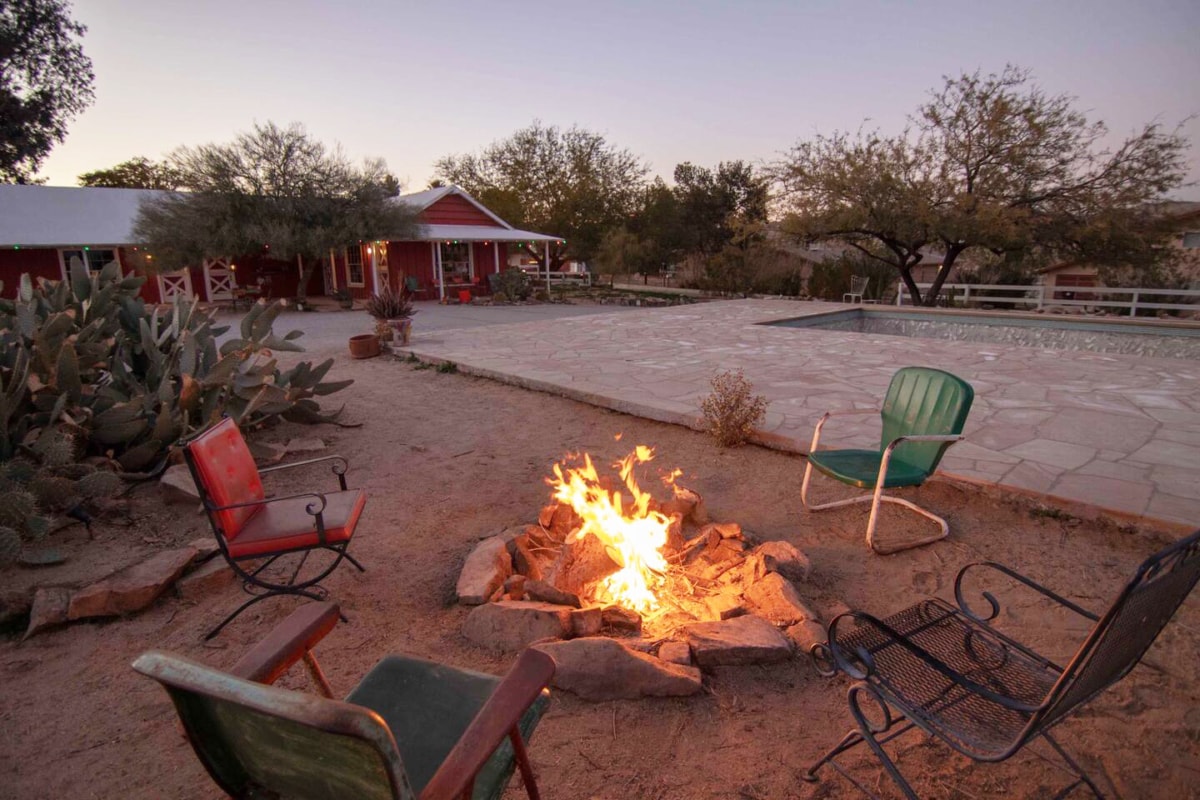
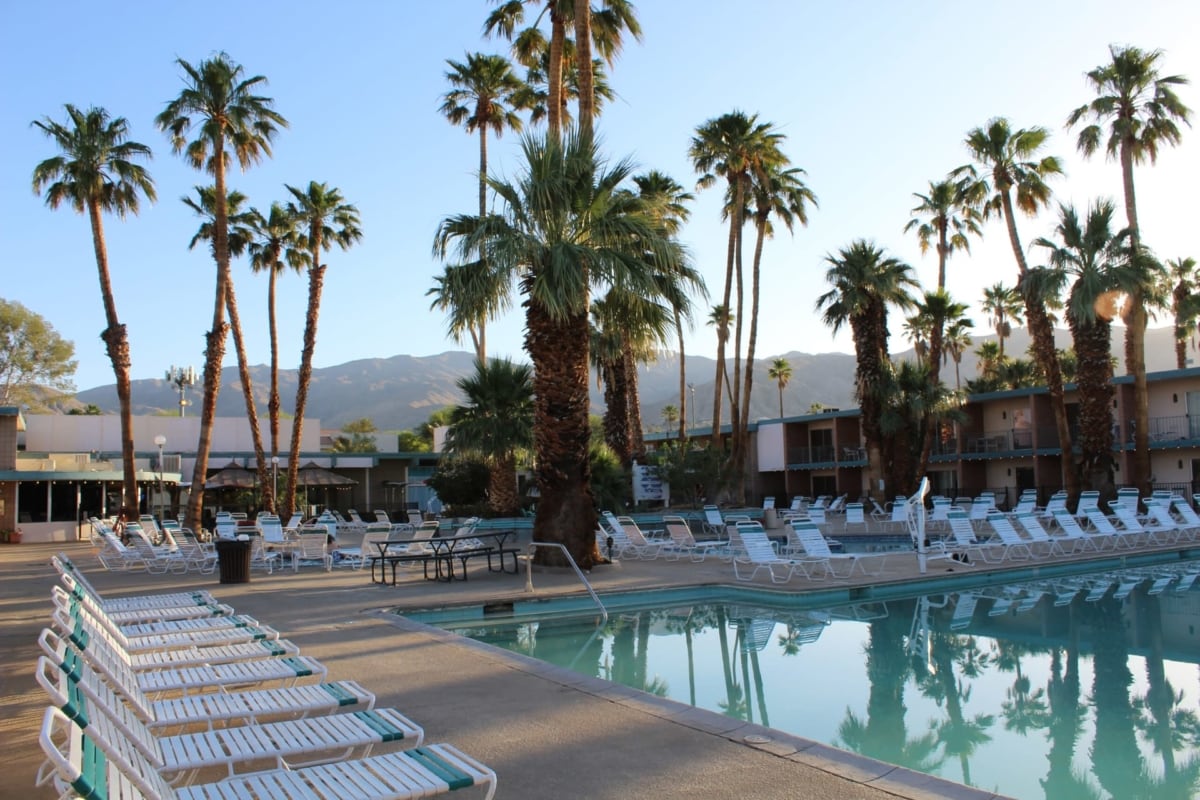
Thanks for bringing me to the Joshua Tree parks even only virtually. Got tired of reading how vast the park is, I would not be able to see everything in one day if I am physically in there. Also, I would have made lots of content in just a day’s visit. I can only imagine.